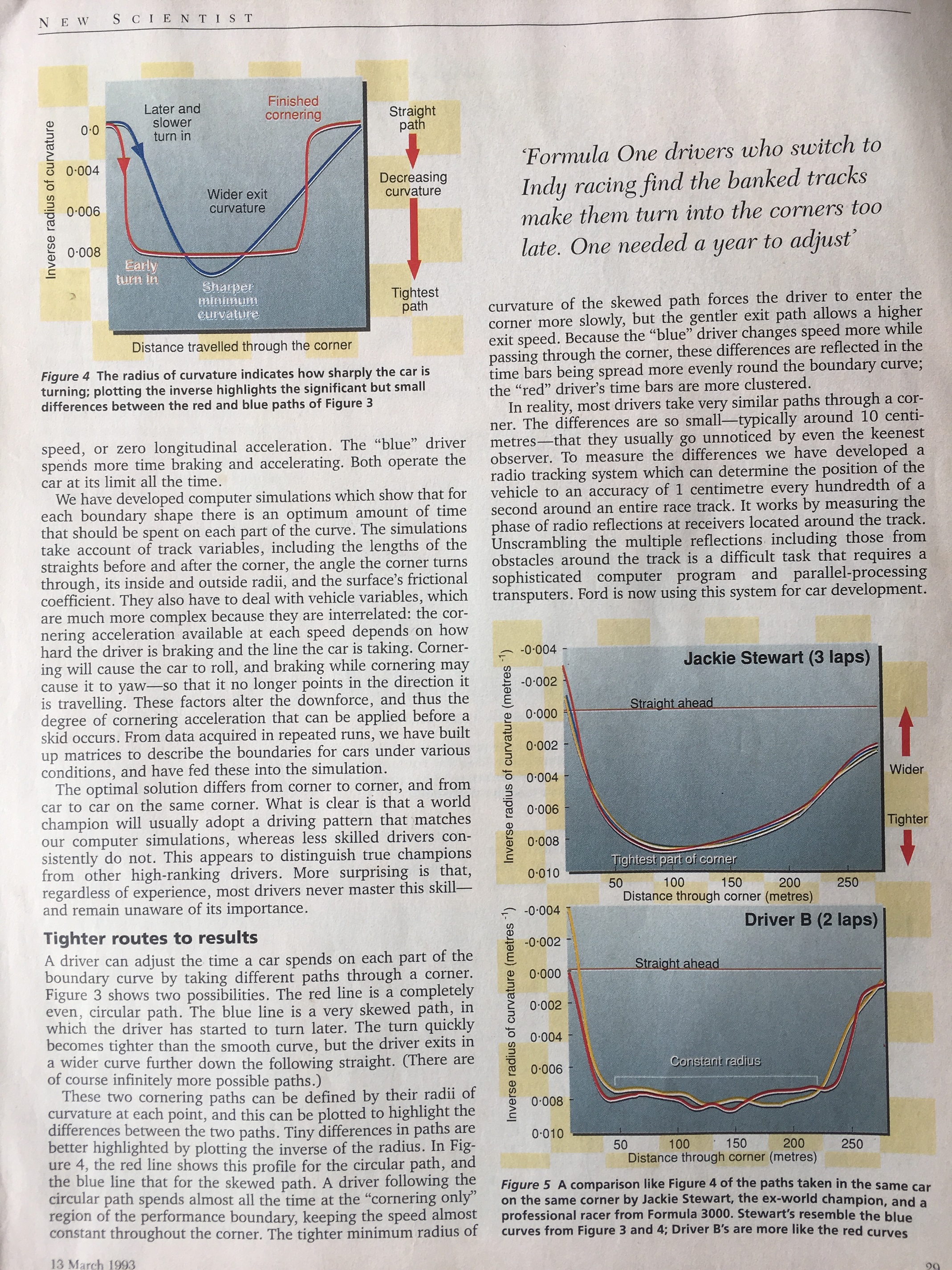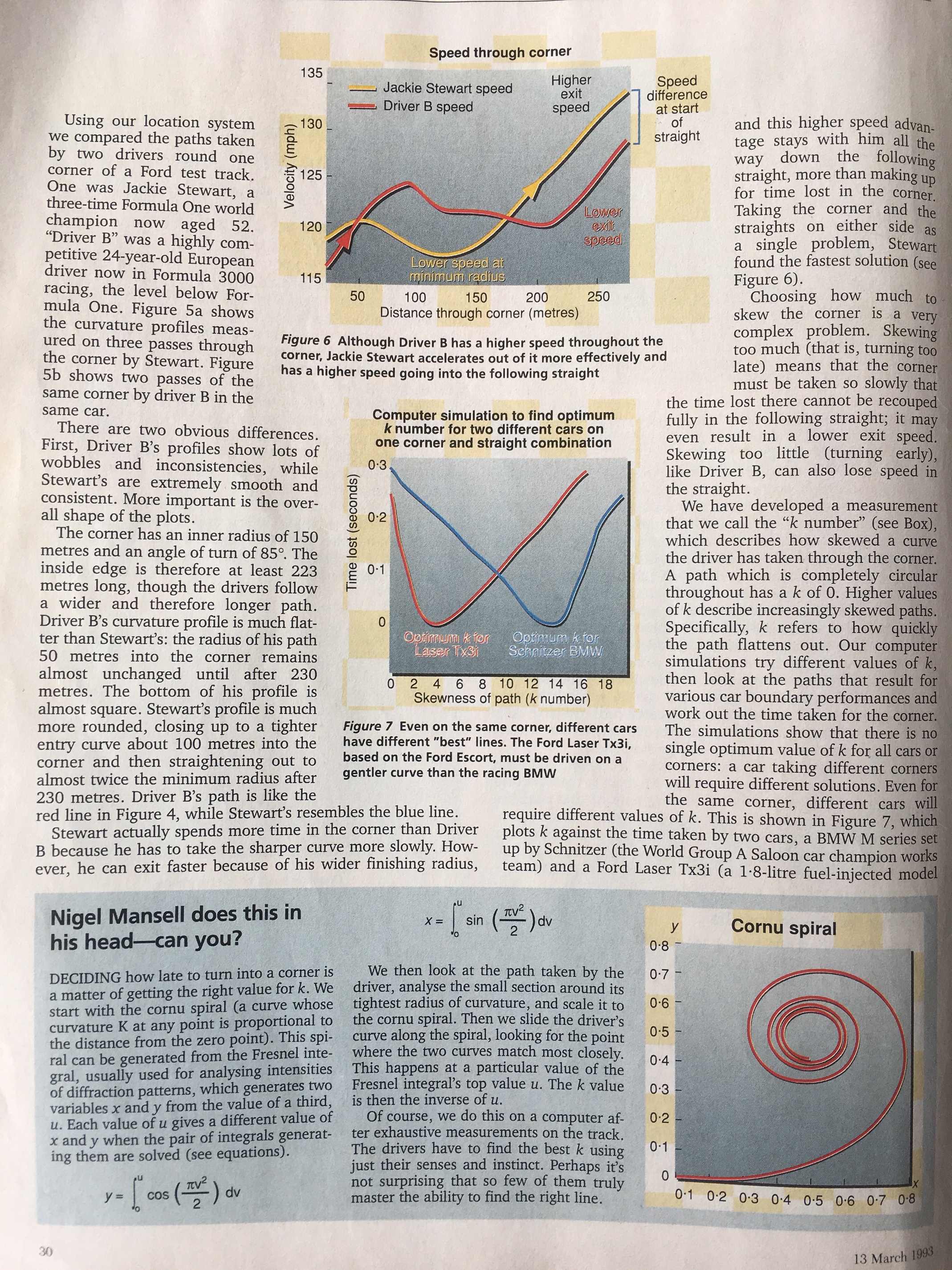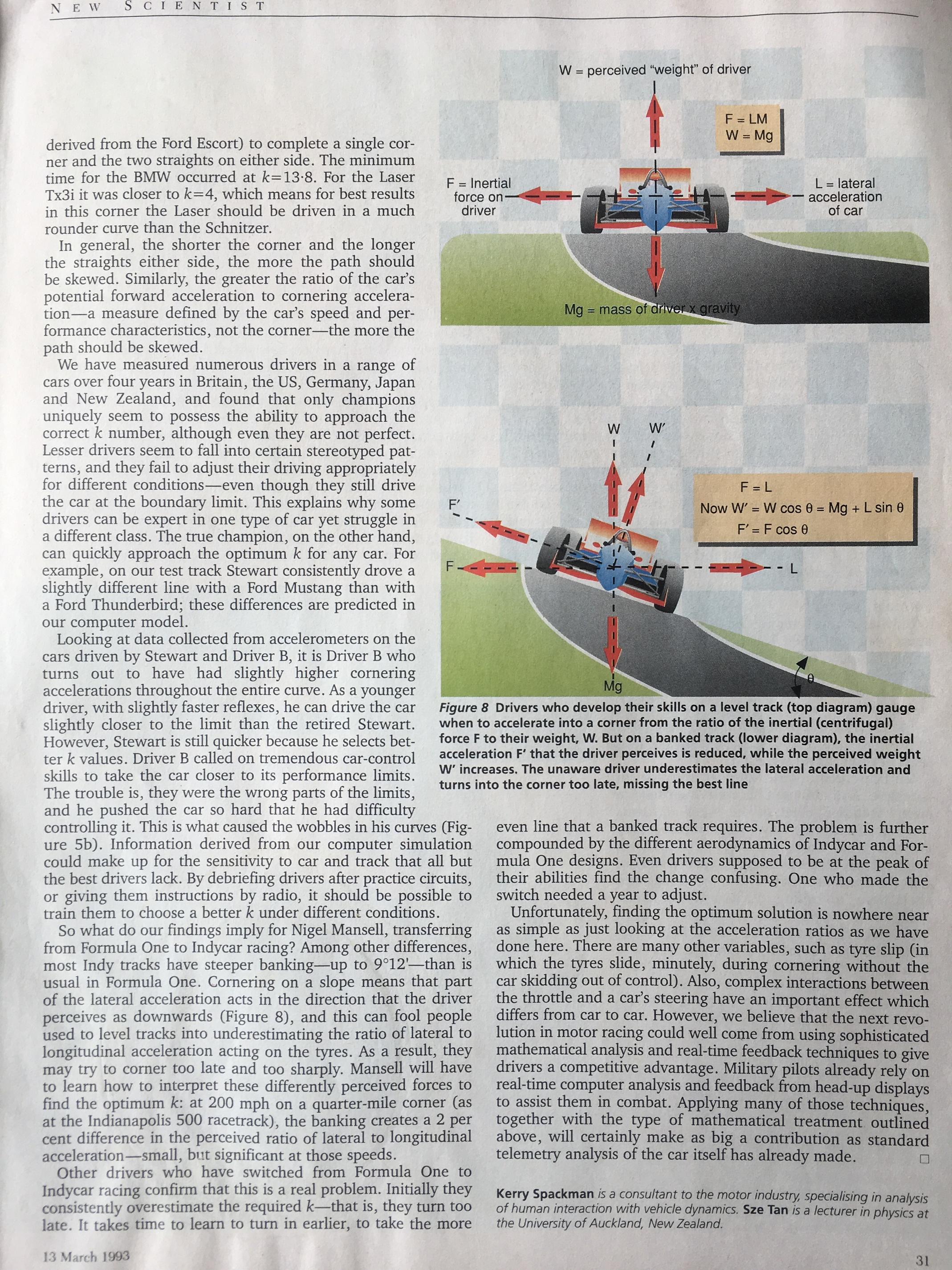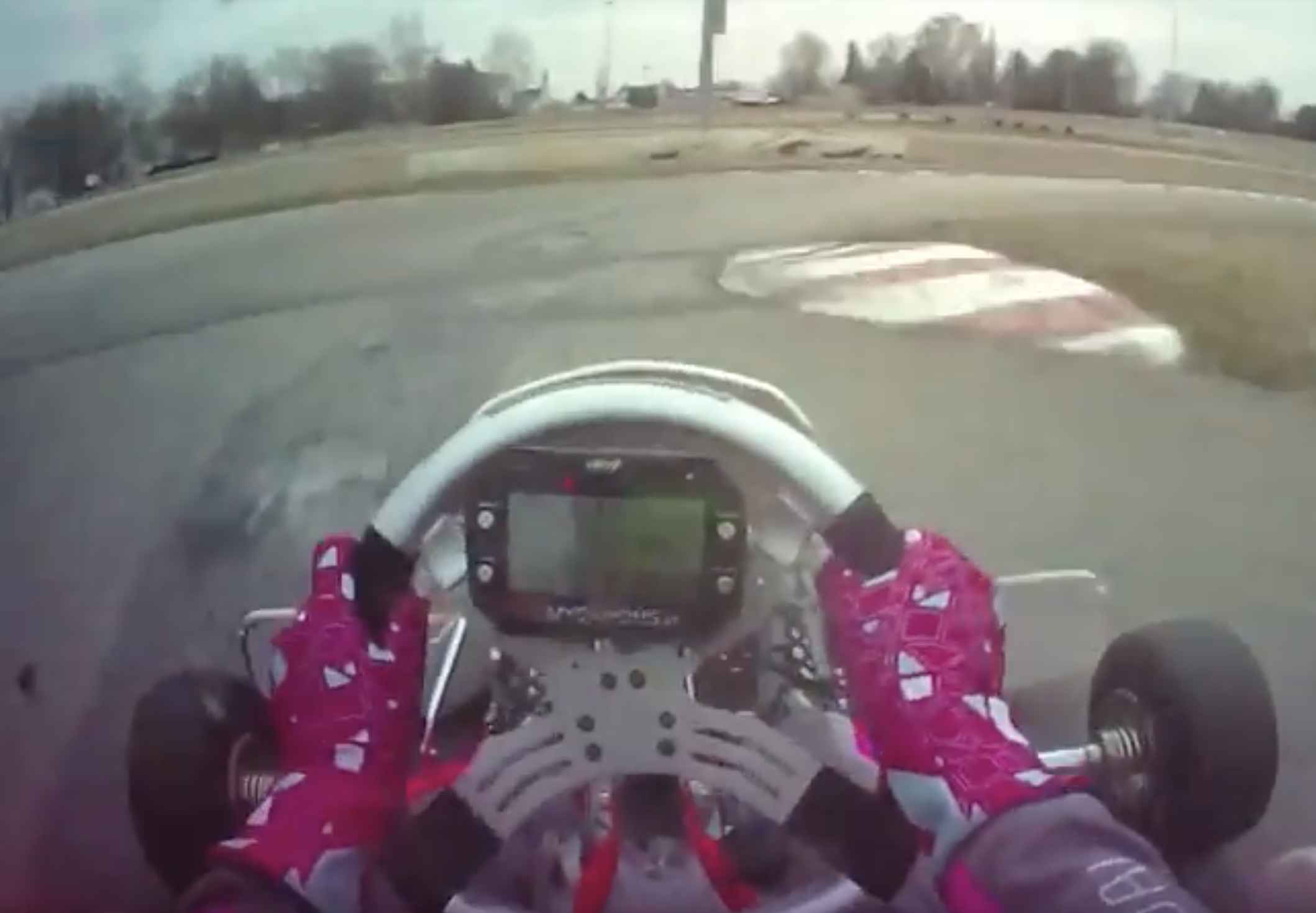This. If someone asked me where I brake for any given corner I would not be able to tell you, I just know. My best driving has always been instinctive and it requires so much of that, that I often can’t remember a single lap of the race.
That’s not to say I can’t watch people and tell them where to brake (within a zone), but there’s no point me telling other people where I brake.
Hopefully you won’t hate me for saying this, but actually you want to know when you unload the outside front tire. The kart needs to push the inside front tire into the ground and lift the outside front tire to get that tipping effect, that’s you’re initial turn in, when the front outside tire is loaded (and the chassis has tipped), the chassis’ ability to flex comes to play. Ordinarily you wind off the lock so that the front inside tire is no longer pushing as hard into the ground and rely on the lateral force and the flexure of the chassis to maintain the inside rear wheel lift.
So for any given point in a corner you are relying on different aspects of the chassis to help. That initial turn in (unloading the outside front and loading inside front) is almost entirely front end steering geometry. The transition from turn in to “corner maintenance” is a combination of steering geometry and chassis flex (don’t want to drop that wheel to fast or at all) and “corner maintenance” is all about chassis flex and making sure the wheel drops when you want to, ideally when you are pointing in somewhat of a straight line and are ready to accelerate.
Its helped me immensely to understand the physics, I worked out TJ’s epiphany regarding driving under the rubber by watching top euro drivers and working out the physics in 2001/2.





